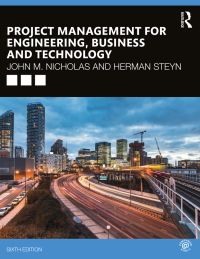1. You are the newly appointed director for the proposed Mozal project. The feasibility study is complete,...
Question:
1. You are the newly appointed director for the proposed Mozal project. The feasibility study is complete, and you must convince the international sponsors and lenders to commit to the project. Develop a presentation to a special board of stakeholders asking for the go-ahead to commit $1.4 billion to the project; address their expectations and how you will deal with the perceived risks.
Construction at the Mozambique site posed major challenges. The locals speak Portuguese, but the expatriate managers, supervisors, and the computer software use English. Some basic engineering work was done in Canada and France; some specialized equipment was designed and manufactured in Japan and France. Most of the planning, coordination, detailed design, and preparation of material took place in the RSA.
Road and rail links connected Mozal to Richards Bay, RSA, where material and equipment arrived from overseas for transport to the project site. At one stage of the project, it became clear that Mozambique agents were having trouble processing the 60 to 80 trucks of equipment and materials that crossed the border daily. But the project director had built good relationships with key stakeholders, including Mozambique’s president, and convinced them to allow the Mozal team to assist in managing the border post.
The project employed many experienced workers from the Hillside project, although thousands more unskilled workers had to be hired. Schools were set up to train them in construction and increase awareness of safety and the risks of HIV infection. To combat malaria, the area surrounding the site was continually sprayed, and full-time on-site clinics set up that would eventually handle over 6,000 cases. For residents displaced by the project, new farming land was allocated and cultivated, and a development trust established to provide for local schooling and other community needs. Before contractors could access parts of the site and service corridors, land mines laid during the civil war had to be cleared. Construction of cross-country power supply lines and, consequently, commissioning of the smelter were threatened by major cyclonic floods. Heavy-lift helicopters were needed to fly in large pylons prefabricated offsite and to string power cables.
Step by Step Answer:

Project Management For Engineering Business And Technology
ISBN: 9780367277345,9781000092561
6th Edition
Authors: John M. Nicholas , Herman Steyn





